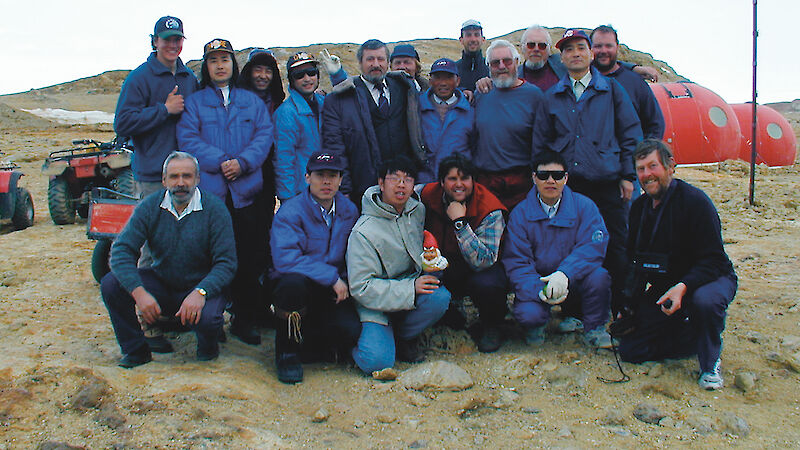The AAD’s Environmental Management and Audit Unit (EMAU) is responsible for developing measures to fulfil Australia’s obligations under the Madrid Protocol, and ensuring that activities in Australia’s Antarctic and subantarctic territories are conducted with minimal environmental impact.
Members of the EMAU were part of the Australian delegation led by AAD Director Dr Tony Press, to the 4th meeting of the Antarctic Treaty System’s Committee for Environmental Protection (CEP), held in the Hague in September 2000. Outcomes for Australia at the CEP include the acceptance by Treaty Parties of the revised plan of management for Site of Special Scientific Interest (SSSI) No. 17 on the Clark Peninsula near Casey. Collapsing ice cliffs had required that the SSSI boundary be moved to accommodate a new and safer vehicle route, and this in turn required that the management plan be revised and resubmitted through the CEP to the Antarctic Treaty Consultative Meeting.
The CEP has adopted the practice of establishing intersessional contact groups (ICG) on issues which are too large or complex to advance during the Committee’s one week meeting, but which demand continuing attention. The CEP endorsed the ongoing leadership by Australia of the intersessional contact group on introduced diseases, and established new groups, in which Australia is a participant, to address several other issues. An ICG on Specially Protected Species, led by Argentina, is assessing the need for a level of protection for Antarctic wildlife above that afforded by the general provisions of the Madrid Protocol. It will also look at criteria which might be used to select species for inclusion for additional protection, and how this might practically be provided.
Another ICG will examine Initial Environmental Evaluations (IEE) across a range of activities prepared by participating Parties. For several years CEP members have been grappling with the problems inherent in addressing requirements of the Madrid Protocol environmental impact assessment, particularly the interpretation of terms used to describe environmental impacts (eg “minor” and “transitory”), and the way in which the various national approaches of the 46 Treaty Parties might be reconciled and benchmarked. The ICG’s work will include examining the way in which the various aspects of activities were defined and assessed, and how the final determination of impact was made.
Some details of the CEP’s work and an archive of its meeting agendas and papers are available on its website at [resource no longer available]. The next CEP meeting is scheduled for late July in St Petersburg, Russia.
A staff member from the AAD’s EMAU spent several weeks this summer at the Larsemann Hills, south of Davis, gathering information and testing proposed management measures for a management plan for an Antarctic Specially Managed Area. The plan is being compiled in conjunction with our Chinese and Russian counterparts, who also operate in the area (Zhong Shan and Progress stations). The project also included familiarisation visits by Chinese and Russian expedition personnel to Davis station, rubbish removal, and developing on-site management links between staff at Davis, Zhong Shan, and Progress.
In February the AAD commenced a project to establish an Environmental Management System for its activities in Antarctica and Australia. The EMS project is expected to take a year to develop to the point of certication to the Australian Standard, AS14001, and will be supported by environmental consultants with EMS expertise.
The EMAU is also responsible for managing Australia’s Antarctic cultural heritage, the Cultural Heritage Officer has produced a draft cultural heritage management and conservation plan for the ANARE site at Atlas Cove, on Heard Island. Similar plans are in preparation for Macquarie Island, in partnership with the Tasmanian government, and for the abandoned Antarctic station Wilkes, near Casey.
The AAD has arranged with the Queen Victoria Museum (Launceston, Tasmania) to provide a home for a redundant original ANARE building which the AAD plans to remove from Mawson station. The building was designed in 1949 by the Australian Department of Works and Housing and originally erected on Heard Island, before being dismantled and re-erected at Mawson in 1955, where it served in turn as a Meteorology Office, a Biology laboratory and a technical workshop.
Tom Maggs
EMAU Manager,
Australian Antarctic Division

